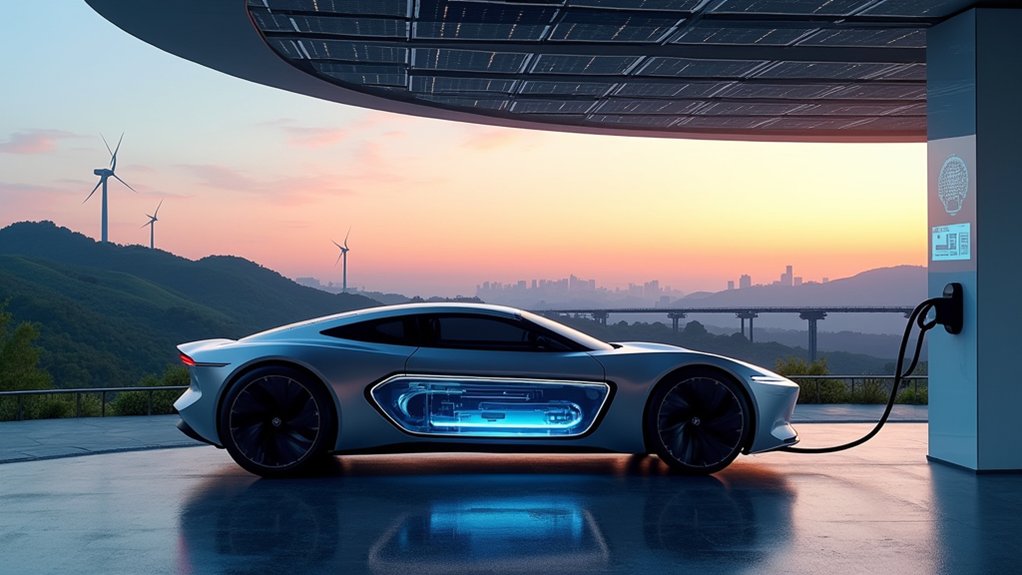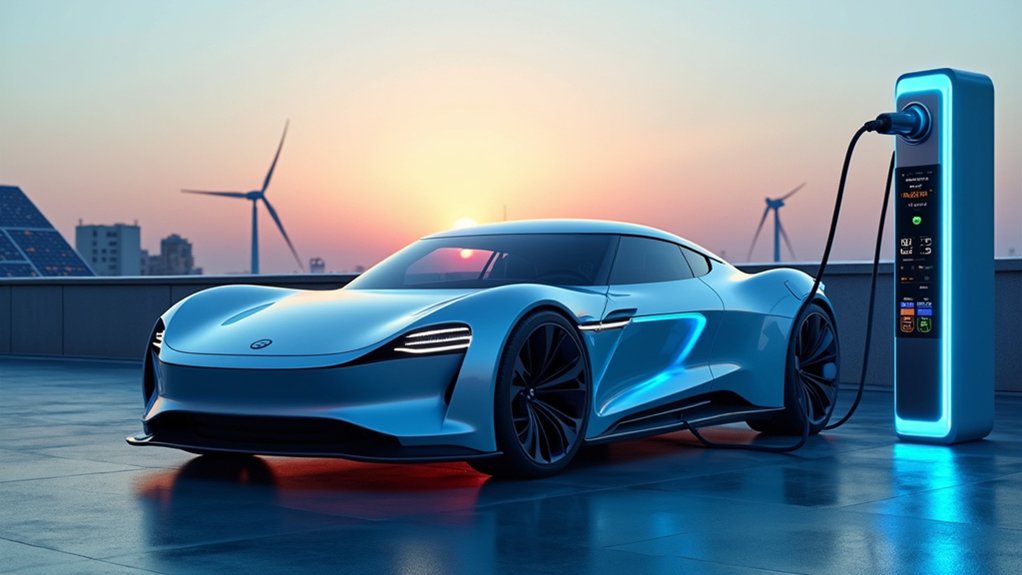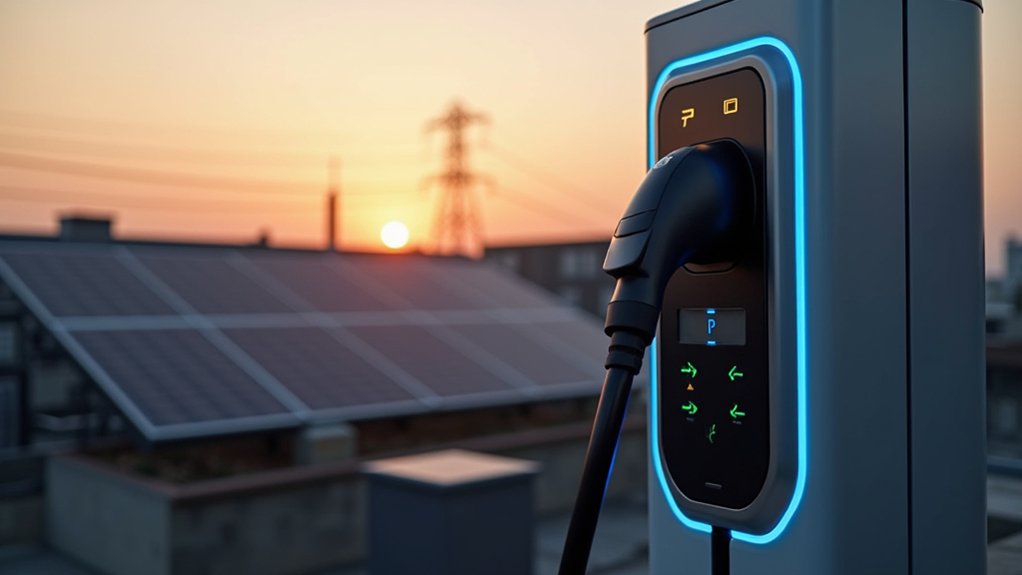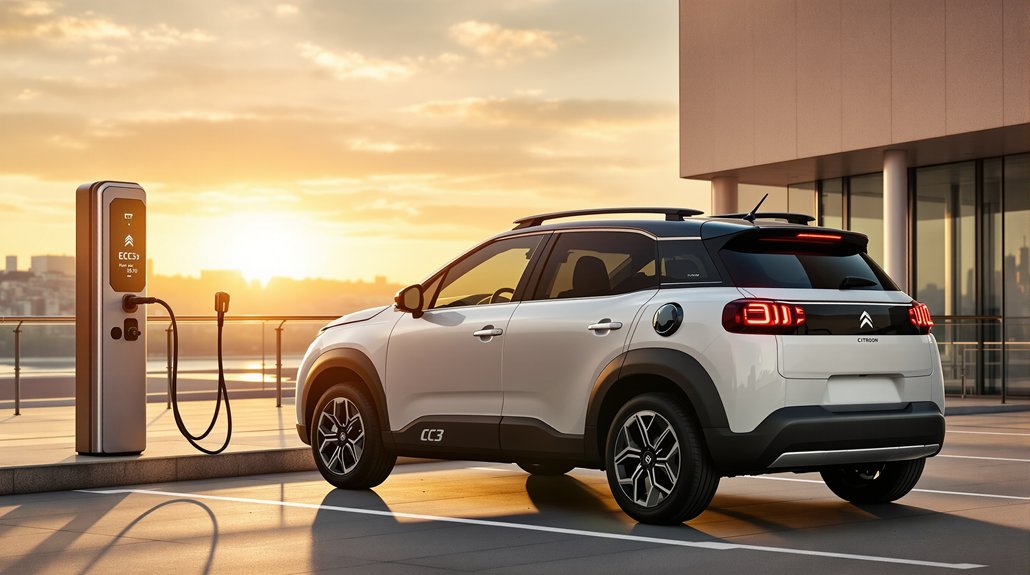Electric vehicles are entering a transformative era marked by significant technological breakthroughs. Advanced lithium-ion batteries now enable rapid charging, while emerging solid-state technology promises enhanced range and safety. Integration of autonomous driving capabilities and smart systems is reshaping the automotive landscape, with predictions indicating EVs will comprise 50% of new U.S. car sales by 2030. Lower operating costs and expanding charging networks make EVs increasingly attractive. The road ahead reveals an electrifying transformation of personal transportation.

The electric vehicle revolution stands at a pivotal crossroads, where rapid technological advancement meets growing environmental consciousness. Modern EVs are pushing the boundaries of what’s possible, with advanced lithium-ion batteries now enabling 80% charges in under 30 minutes through DC fast charging systems. The integration of smart charging networks and ultra-fast chargers, exemplified by Tesla’s Supercharger V4, demonstrates the industry’s commitment to addressing charging speed concerns.
Battery technology continues to evolve at an unprecedented pace, with current EV batteries lasting 8-15 years or roughly 200,000 miles. The emerging solid-state battery technology promises to deliver higher energy density and enhanced safety features, potentially revolutionizing the entire EV landscape. These advancements, coupled with decreasing production costs and growing manufacturer competition, are making EVs increasingly accessible to mainstream consumers. The development of the nickel-iron battery by Thomas Edison marked an early milestone in EV battery evolution.
The synergy between autonomous driving capabilities and electric powertrains is reshaping the automotive industry. EVs’ electronic architecture naturally complements advanced driver assistance systems, while AI-driven features enhance everything from predictive maintenance to navigation efficiency. The development of autonomous EV fleets could fundamentally transform public transportation and ride-sharing services. Experts predict that over 50 percent of new cars sold in the U.S. will be electric by 2030.
As EVs and autonomous technology converge, smart systems are revolutionizing how we think about transportation, maintenance, and mobility services.
Environmental considerations remain at the forefront of EV development, with manufacturers increasingly adopting carbon-neutral production processes. The integration of renewable energy sources for charging, combined with innovative Vehicle-to-Grid (V2G) and Vehicle-to-Home (V2H) technologies, positions EVs as essential components in sustainable energy systems. Government policies worldwide are driving increased adoption of electric vehicles through incentives and regulations.
Battery recycling programs are becoming more sophisticated, addressing environmental concerns about battery disposal.
The economic landscape for EVs continues to improve, with maintenance and operating costs consistently lower than traditional internal combustion vehicles. Government incentives, including subsidies and tax rebates, are making EV ownership more attainable. The emergence of a robust used EV market offers budget-conscious consumers viable entry points into electric mobility.
As charging infrastructure expands and renewable energy integration reduces charging costs, the electric vehicle future appears increasingly bright and accessible.
Frequently Asked Questions
How Long Do Electric Car Batteries Typically Last Before Needing Replacement?
Electric vehicle batteries typically last 15-20 years or 200,000-280,000 miles before requiring replacement, with many retaining 80-85% capacity after 250,000 miles.
Modern EVs show improved degradation rates of just 1.8% annually, while some models exceed 400,000 miles of service.
Manufacturer warranties guarantee 8 years or 100,000 miles minimum, though real-world data suggests considerably longer lifespans, particularly with proper maintenance and charging habits.
Can Electric Vehicles Be Safely Charged During Thunderstorms?
While EV charging systems incorporate safety features for wet conditions, charging during thunderstorms isn’t recommended.
Lightning strikes can cause damaging power surges that standard chargers aren’t designed to handle fully.
Best practices include unplugging during storms, installing surge protection devices, and utilizing indoor charging facilities when possible.
For emergency situations with critically low batteries, minimizing charge duration and seeking sheltered charging locations reduces risk exposure.
What Happens to Electric Car Performance in Extreme Cold Weather?
Electric vehicles experience significant performance impacts in extreme cold.
Battery range typically drops 25-41% at freezing temperatures as chemical reactions slow down. Cabin heating further depletes power reserves, while charging times increase substantially.
Modern EVs combat these issues through thermal management systems and heat pumps, which can improve efficiency by 20%.
Preconditioning while grid-connected and parking indoors help maintain ideal battery temperature and range.
Are Electric Cars More Expensive to Insure Than Conventional Vehicles?
Electric vehicles typically cost around 20% more to insure than conventional cars, with average annual premiums of $4,043 versus $2,678 for gas vehicles.
This price difference stems from EVs’ higher MSRPs, expensive battery replacement costs, and specialized repair requirements.
However, recent trends show insurance costs beginning to equalize, with some models like the Ford Mustang Mach-E and Volkswagen ID.4 achieving premium parity with traditional vehicles.
Can Electric Car Batteries Be Recycled After They’re No Longer Useful?
Electric car batteries can be effectively recycled through established processes like pyrometallurgical and hydrometallurgical methods, recovering up to 95% of critical materials including lithium, cobalt, and nickel.
The recycling industry employs various techniques, from acid-based extraction to direct recycling, which preserves battery components for reuse.
This circular approach reduces environmental impact, supports resource conservation, and helps offset manufacturing costs while decreasing reliance on raw material mining.










1 comment